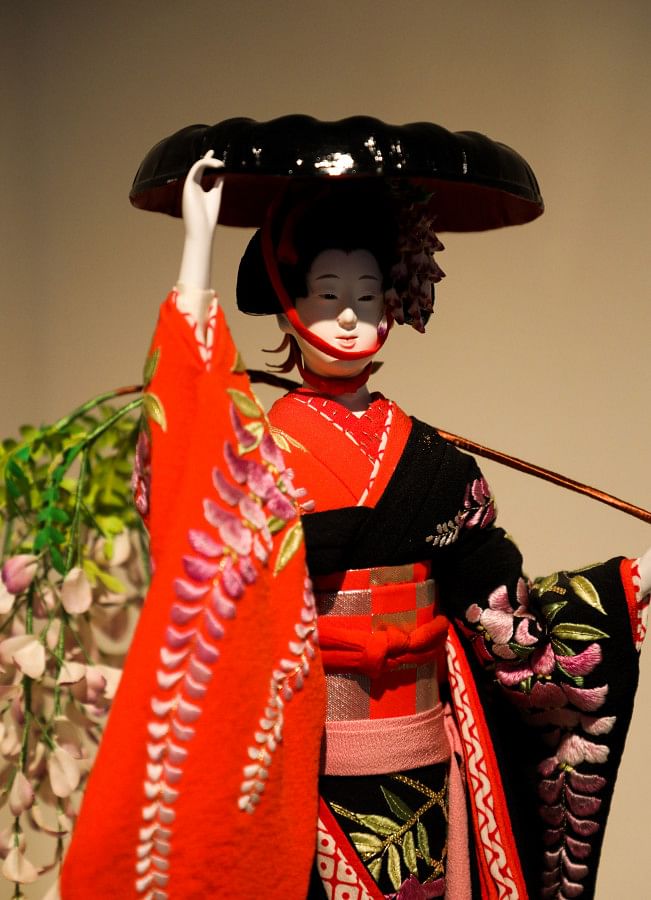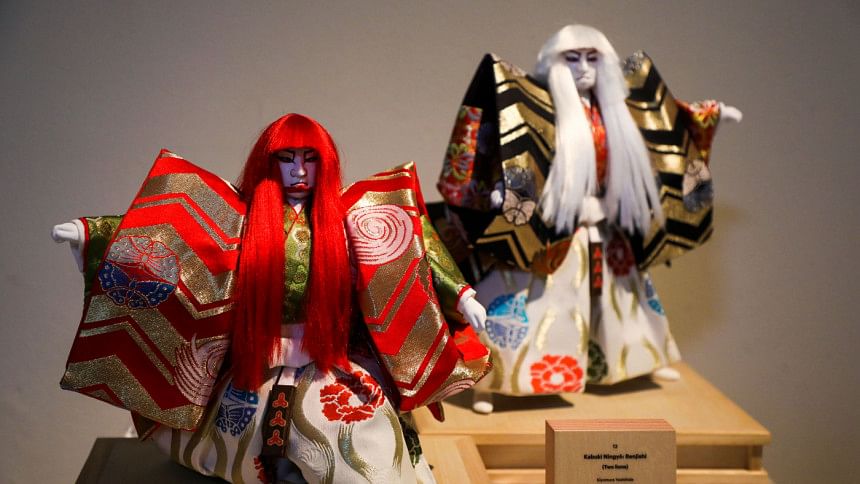Unveiling the Rich Tapestry of Japanese Culture through Dolls

From as early as the 7th century, dolls have become an integral part of Japanese culture for rites, fortune, abundance, blessing, entertainment, and even communication.

According to Japanese belief, Ningyo, which translates to 'human shape', has the power to bridge the differences of race and ethnicity, directly appealing to a life of abundance with childlike peace and beauty. These dolls are perceived as messengers who come to awaken the childlike beauty in us that dispel misfortune and bring us eternal peace.

With that idea in mind, the Japanese Foundation, in collaboration with the Embassy of Japan in Bangladesh, inaugurated an exhibition titled "Ningyō: Art and Beauty of Japanese Dolls" at Bangladesh Shilpakala Academy (BSA) on Friday.

The Japanese Foundation curates a globe-trotting exhibition under the same title, traversing the world to foster international mutual understanding. At the heart of its mission lies the cultivation of friendship and connections between Japan and the global community, with a primary focus on arts and cultural exchange.

The exhibits at BSA's National Art Gallery transcend being mere reflections of Japanese society across epochs; they embody sophisticated techniques, technologies, and stylistic nuances in doll-making. Emphasizing local diversity and the appreciation of natural beauty, these artefacts serve as poignant markers of Japan's artistic and cultural evolution throughout history.

In the exhibition, the development and changes in the shape of the dolls are represented according to the important time periods of Japan. This can be seen through the shape of the dolls, from the traditional to the collector figure. Not only that, this exhibition also displays "Ningyo" forms and styles with characteristics from each region in Japan.

Known for its century-old, rich, colourful cultural tapestry, Japan has always been a place of mystifying spectacles. No matter how much one delves into their distinctive culture and history, the awe and beauty of it persists. However, the charades of that unknown land somewhat unfolded at the BSA exhibit, showcasing colourful, well-adorned, intricately crafty and purposeful representations of regional dolls.

The foundation thoughtfully presented a careful selection of 67 dolls, introducing the historical evolution and cultural significance of Japanese dolls through four discerning sections: "Ningyō to pray for children's growth, "Ningyō as fine art," "Ningyō as folk art," and "Spread of Ningyō culture."

This thoughtful categorization facilitates a nuanced exploration of the intricate relationship between Japanese dolls and the rich historical and folkloric tapestry of Japan.

For instance, "Amagatsu" and "Hoko" dolls are designed to protect children from any misfortune that may befall them. "Saga Ningyo'' originated with dolls created with Buddhist sculptures, carved from wood and then richly adorned in gold and various types of paint to present patterns that stand out in relief. "Nara Ningyo" originated with small dolls offered to the gods at a festival held at Japan's Kasugataisha shrine in Nara prefecture. "Isho Ningyo" are art dolls that originated to showcase Japan's aesthetics in traditional different clothing styles.

Among the folk dolls, "Miharu Ningyo" and "Takasaki Daruma" represent legendary Japanese warriors and heroes. "Hakara Ningyo" from the Edo period (1603-1868) represents a character called "Shojo", who is a fairy bequeathing a sake jug, which can never become empty to a young boy who is devoted to his parents. "Nara Ningyo" is a character from the traditional Japanese Noh play "Shojo".
Likewise, each doll exhibited at the gallery represents a fragment of Japan that cannot be understood without exploring the others. The exhibition as a whole feels like a deep dive into a culture that is so rich, vast and purposefully evolved but, at the same time, very fluid, welcoming and filled with beauty.

Most of these dolls are ingeniously crafted with mere wood, cloths, bamboo and mud, and some kinds of dolls that only grandparents gift to their grandchildren at birth, puberty and even graduation. These can only be inherited through a strong family line, and the tradition persists for centuries in Japan, said Kazuyo Zoha, president of Ikebana International Japan, who was paying a visit to the exhibition in loving memory of her country.

"Since I do not live in Japan anymore, I have kept the doll that I inherited in the USA with my family so that even if I die, my grandchildren get mine. You see, the doll is very intricately made, and it is pretty special to me. Since most of the makers are dead, there's no way I can remake anything like that, it is a century-old artistry," said Kazuyo Zoha while adoringly observing the dolls of her culture and country.
Doll culture has expanded into the world of traditional performing arts in Japan, and commemorating their doll festival on March 3rd –a time when the flowers are beginning to bloom is the day to celebrate the growth of female children– the Japan Foundation and the Embassy of Japan arranged the exhibition to give a glimpse of Japan to Bangladesh.

Machida Tatsuya, Chargé d'Affaire, from the Embassy of Japan expressed, "Bangladesh holds a special place as one of our closest friends, prompting us to consistently organize cultural exchange programs, ranging from music and dance to painting festivals. This time, we've brought a cherished cultural gem of Japan, 'Ningyō,' to share with Bangladesh.

"Dolls like these are ubiquitous in Japanese households, symbolizing a delicate connection that we believe strengthens the bonds of Japan-Bangladesh friendship. This marks an auspicious beginning, and we have extensive plans for fostering more cultural exchanges in the future," the Japanese Chargé d'Affaire stated.

The exhibition serves as a comprehensive exploration into the multifaceted realm of Japanese doll culture. Delving into the archetypes of dolls in Japan, it intricately examines local dolls that embody the diverse climates and narratives spanning the nation. The showcase extends to encompass contemporary dress-up dolls, cherished as toys in modern Japan and transcends borders to showcase globally acclaimed scale figures. This curated presentation offers a nuanced understanding of the rich and evolving tapestry of Japanese doll artistry.
For centuries, this ancient art form, originating in the period between 794 and 1185 AD, has served as a cultural vessel for the Japanese people, through which they offer prayers for the well-being and happiness of their children to shield them from misfortune. Evolving over time, "Ningyo" has transformed into a refined craft, inviting admiration for its aesthetic allure.
The exhibition will be open for visitors until Monday, February 16.

 For all latest news, follow The Daily Star's Google News channel.
For all latest news, follow The Daily Star's Google News channel. 






Comments